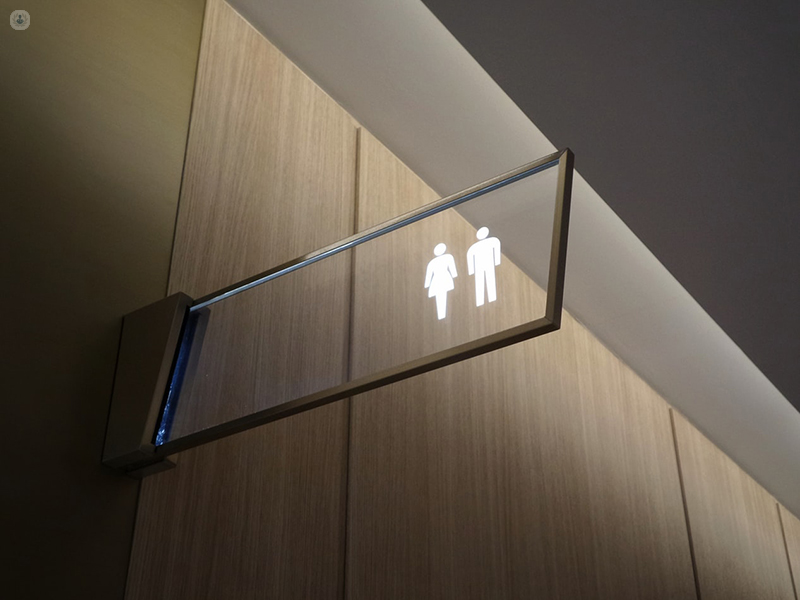Stress incontinence of urine
Escrito por:Stress urinary incontinence (the leakage of urine resulting from increased intra-abdominal pressure during effort or exertion) is a common and distressing symptom that affects 25-45% of women. Risk factors include previous pregnancy, vaginal delivery, obesity, and postmenopausal status. Stress urinary incontinence can have a major impact on quality of life.
Obstetrician and urogynaecologist in London, Ms Charlotte Chaliha talks about how to stop stress incontinence and who is more at risk.

Who is more at risk of stress incontinence, men or women?
Women are more at risk of stress incontinence than men. A major risk factor is vaginal delivery. Stress incontinence is very common after vaginal delivery, but in most cases, it resolves by one-year post-delivery.
How can someone stop/cure stress incontinence?
Treatment can be divided into non-surgical management, and if that fails surgery. All women, if possible, should have at least three months of pelvic floor physiotherapy with a specialist physiotherapist before opting for surgery.
Non-surgical treatments
These include:
- Antenatal and postnatal pelvic floor exercises
- Managing conditions that weaken the pelvic floor such as chronic cough, constipation
- Avoiding excessive weight gain and programmed weight loss regime
- Avoiding heavy lifting
- Fluid management
Surgical treatments
There are numerous operations for the treatment of stress incontinence, with varying rates of success. Surgical treatment for stress urinary incontinence has evolved over the past two decades, with each procedure having developed to overcome the limitations of previous procedures.
The procedures recommended by NICE include:
- Colposuspension: This involves lifting up the tissue around the neck of the bladder and suspending it in this lifted position using synthetic stitches
- An autologous rectus fascial sling: a sling is made using your own body tissue from your abdomen. The sling is placed behind the tube that carries urine out of your body (the urethra) to support it. It is attached to the inside of your abdomen using synthetic stitches. Surgeons may use stitches that eventually dissolve or stitches that remain in the body permanently.
- A retropubic mid-urethral mesh sling: this involves placing a strip of synthetic mesh behind the tube that carries urine out of your body (the urethra) to support it in a sling. The strip of mesh is sometimes called a tape. Synthetic mesh is a plastic product that looks like a net. The mesh stays in your body permanently.
Each of these procedures have their own specific risks and benefits. Although the mid-urethral tape was the primary procedure for continence in the UK, currently in the UK, this procedure cannot be offered until concerns regarding synthetic mesh placed in the vagina have been addressed. These are concerns regarding mesh-related pain, erosion and infection.
Periurethral injectable
If this procedure is not suitable, or a patient wishes for a less invasive procedure, a periurethral injectable can be offered. For this procedure, a synthetic substance is injected into the walls of the urethra (the tube that carries urine out of your body) to increase its size and allow it to remain closed with more force. The bulking agent stays in the body permanently. No incisions (cuts) are made. Usually, a thin camera called a cystoscope is passed into the urethra. Injections are made through this. This is usually done with a local anaesthetic. It can also be done under general or spinal anaesthetic.
This procedure has less long-term success but it has the advantage of lesser morbidity than the procedures discussed above.
Products for stress incontinence
If you require continence protection, it’s important that you use the right pads otherwise urinary leakage can wet your skin and cause skin irritation. Tena ladies are a well-known and popular brand. There are also devices that can be placed in the vagina ad hoc to help with leakage, particularly helpful during exercising. A continence advisor or physiotherapist can advise.
Laser treatment
Laser treatment has also been used for stress incontinence as well as vaginal atrophy. It is thought to work by stimulating the production of collagen. However, there is little published data on long-term efficacy and results are variable.
If urinary incontinence is affecting your life, seek help from a qualified professional such as Ms Charlotte Chaliha.


